| This is the state of the canoe on my first trip.
All
there is to start is the bark laid out on the building bed. On top of
it is the building frame, loaded down with rocks to keep things in place. Note that this shot helps dispel one of the key misunderstandings about birch bark canoes, that is, the outside white part of the bark faces inside on the canoe. This canoe is going to be 17 feet long. |
From this view you can better see the building frame and the rocks. The frame is used to give the canoe its basic shape. The interesting thing about bark canoes is that they are build outside-in. That is, rather than build the frame and then skin it, you shape the skin, and then build the frame inside. |
|
||
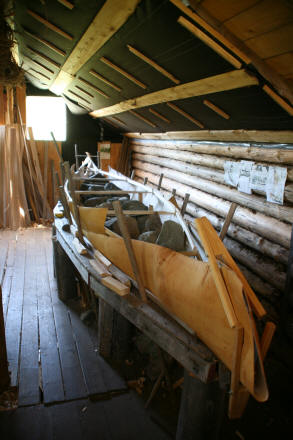 |
In contrast to the previous two images from my first trip, this is the canoe on August 26th. The main thing visible in this shot is that the bark is starting to be shaped, and additional panels are being added. It is worth noting that it takes multiple pieces of bark to make a canoe of this size. | This shot, taken at the same time, shows the canoe from a different perspective as the one on the left. Notice that the inwales have been roughed in, and that temporary thwarts are being used. | 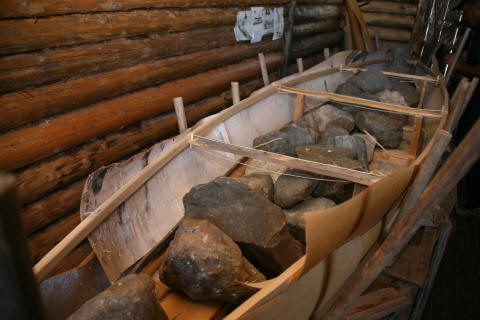 |
|
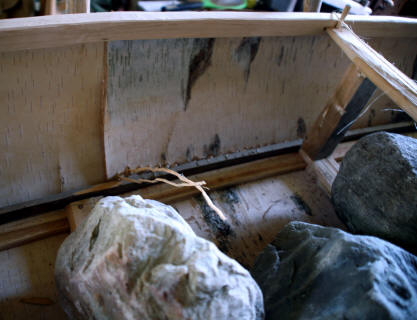 |
This close-up shows how the side panels are starting to be stitched on to the bottom sheets that we saw in the two photos at the top of the page. You can also better see the inwale, and a temporary thwart. There is more on stitching on the next page. | This is Tom carving one of the outwales. The outwales parallele the inwales, with the bark secured in between, then the whole thing eventually covered by the topwales. Since the canoe is going to be slightly over 17' long,, all six pieces (2 of each) need to be over 18' long in order to take curvature into account. They must be split out of the log, each in a single piece. |
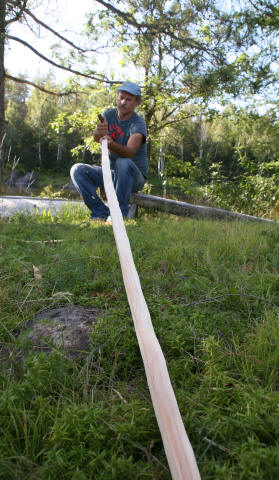 |
|
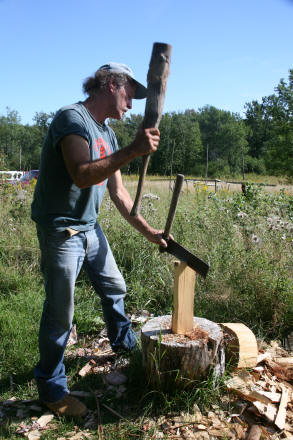 |
The gunwales and bark are held together by a
combination of root lashings and wooden pegs. Here Tom is using his maw and froe to split a piece of birch.. We will carve the pegs from these pieces. |
These are the pegs that will be used to secure the gunwales - all 76 of them. To me they seem like unleaded pencils. |
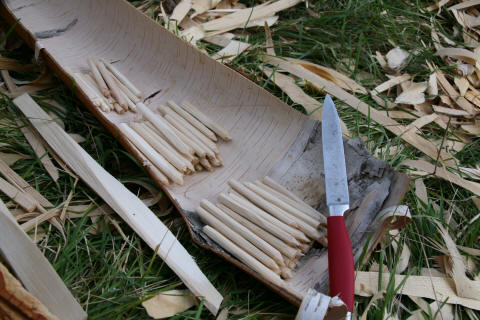 |
| << Previous | Bill Buxton Home | Canoe Home | Next >> |